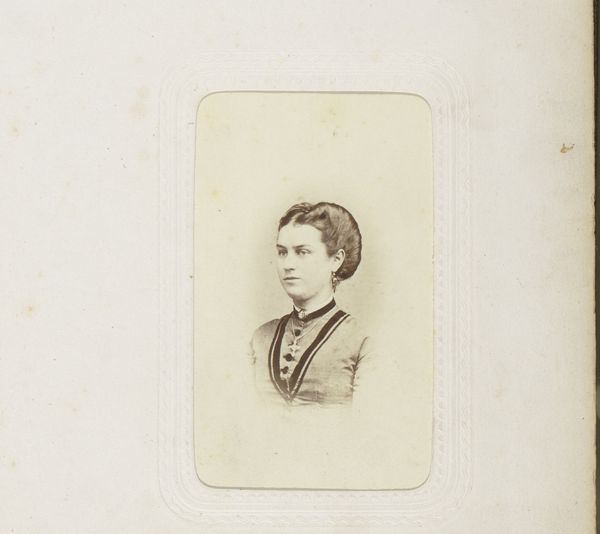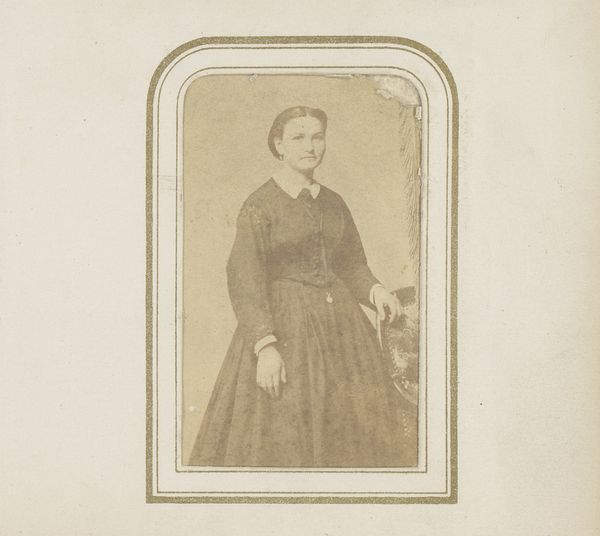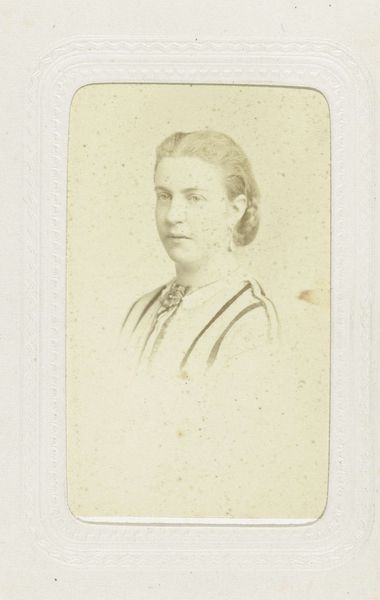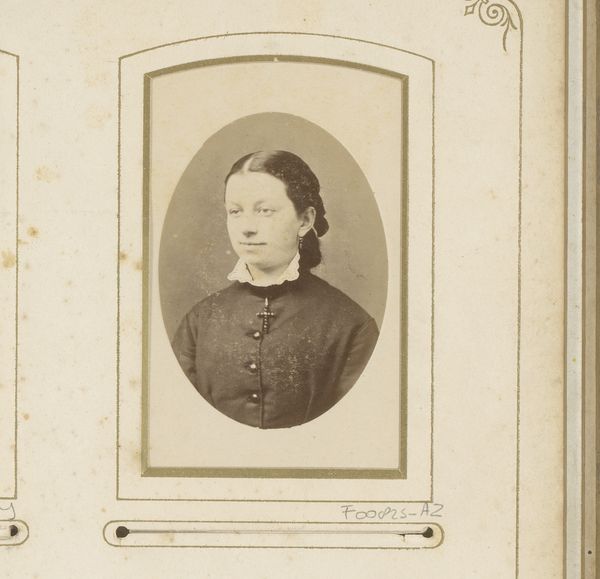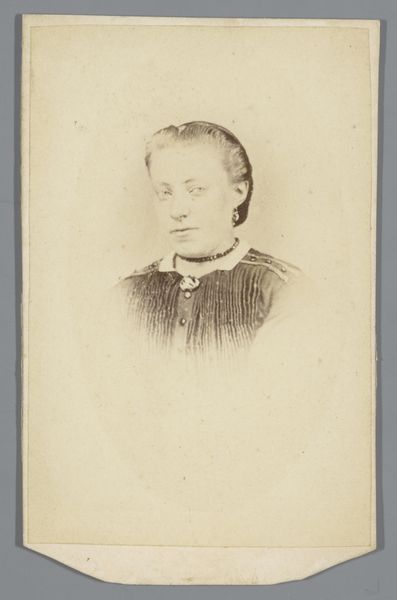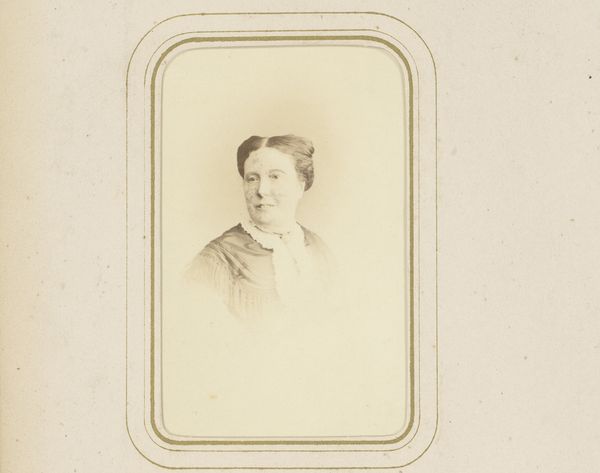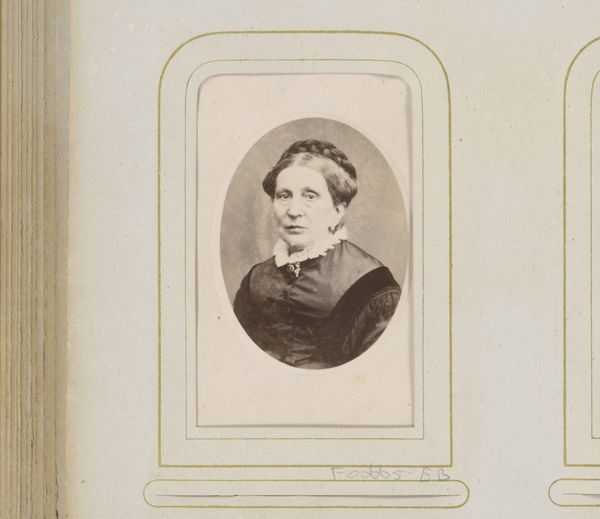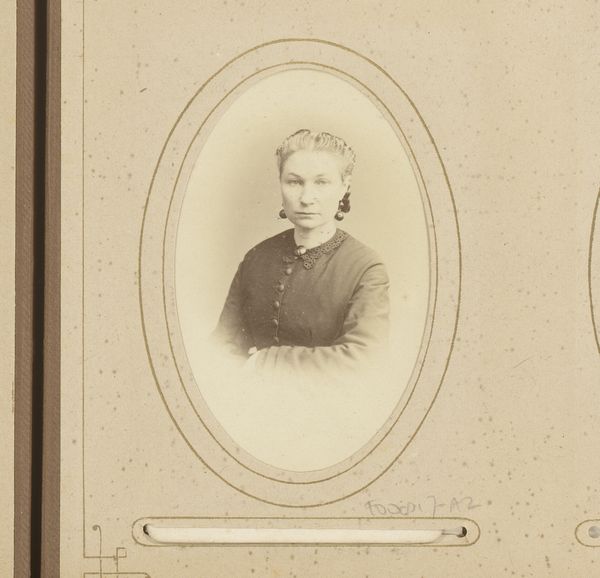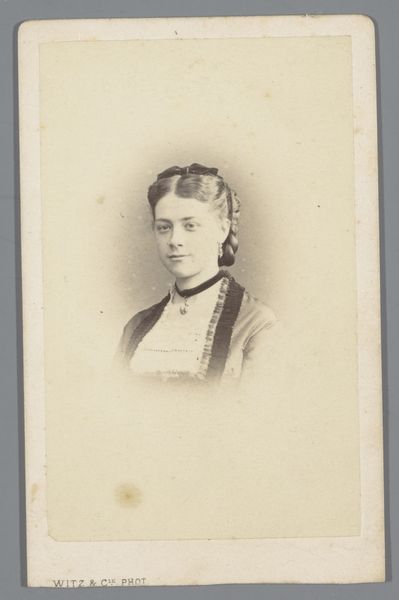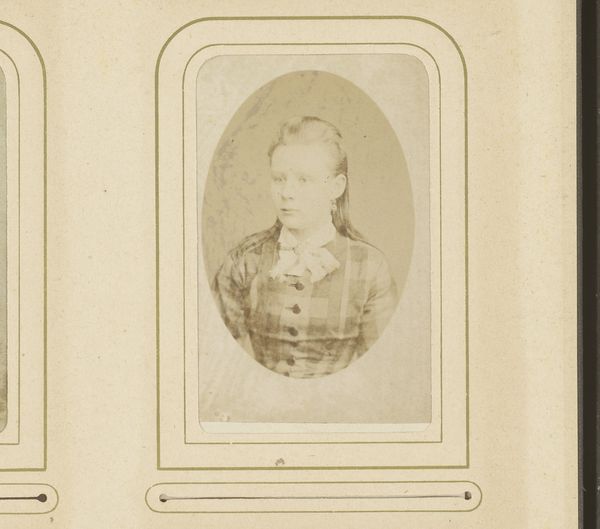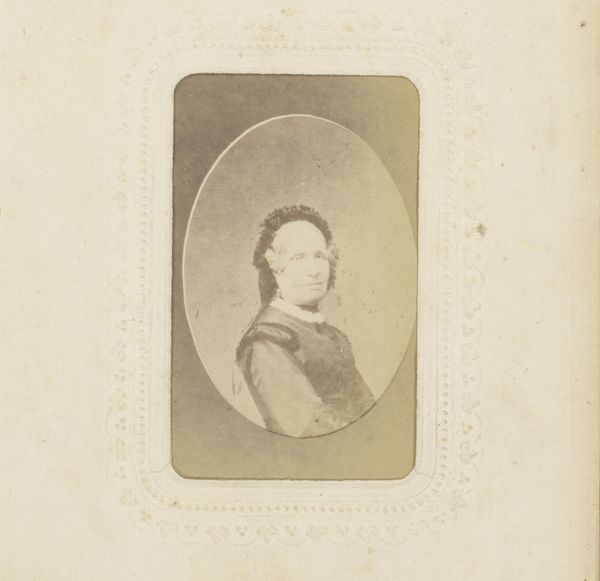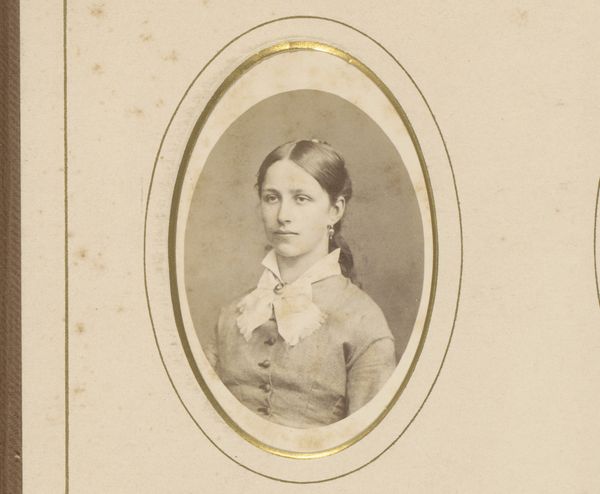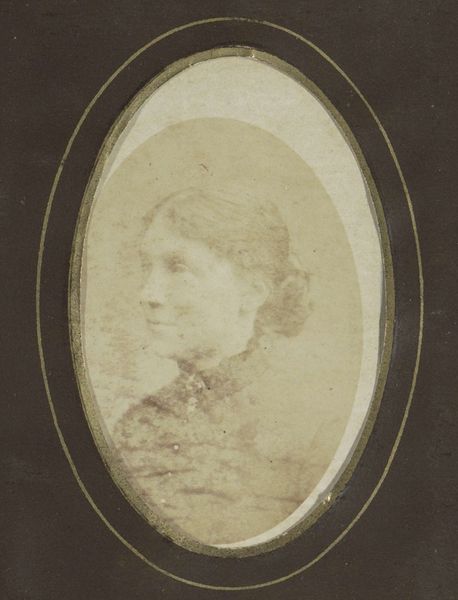
Dimensions: height 86 mm, width 53 mm
Copyright: Rijks Museum: Open Domain
Editor: Here we have "Fotoreproductie van een getekend portret van een vrouw," dating from around 1860 to 1872, by Louis Buchheister, created using pencil. It's a very subdued piece, quite muted, and there's something intriguing about its almost ghostly presence. What draws your eye when you look at it? Curator: Immediately, I observe the interplay between light and shadow, particularly how it defines the contours of her face. The artist’s meticulous control of the pencil, seen in the varying densities of line, is remarkable. Notice how the shading is not merely representational, but creates a tonal structure which provides significant depth. What do you notice about the framing? Editor: It’s almost like two frames, one directly around the portrait and then another further out. They seem to reinforce the portrait, but at the same time they confine it. Curator: Precisely. The framing functions as a visual device, directing our gaze inwards, towards the subject. Observe how the outer frame, in its broader form, echoes the softer curves within the inner portrait itself. It establishes a sort of rhythmic visual echo which stabilizes the entire composition. What impression does her gaze convey to you? Editor: She’s staring right at us, and there’s a weight to it. It’s not confrontational, but more like... reserved. Curator: Indeed. That carefully constructed composure derives in part from the strict frontality and balanced facial proportions. These formal devices impart both stillness and a measured emotionality to the portrayed subject. Through this mastery of technique and deliberate organization of formal elements, the artist guides us toward an encounter with what one could interpret as serene dignity. Editor: That’s fascinating. I never thought about the gaze in connection to composition! Curator: Paying close attention to the visual building blocks of an artwork—line, form, tone, space—unlocks deeper understandings about its meaning and impact. It allows us to explore the artistic intelligence that governs every aesthetic choice, a way of creating visual impact through the strategic use of formal arrangement.
Comments
No comments
Be the first to comment and join the conversation on the ultimate creative platform.
